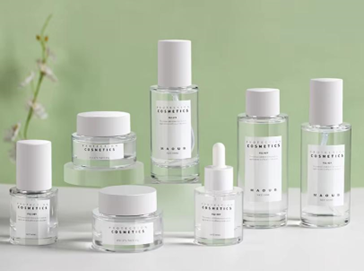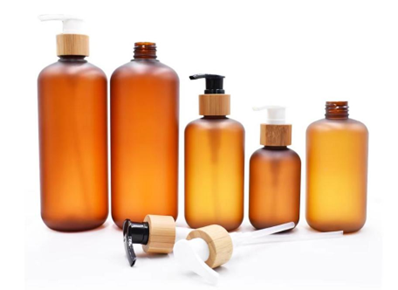The cosmetic industry, celebrated for its innovation and glamour, is under scrutiny for its environmental impact. Central to this concern is the packaging of cosmetic products. It’s not merely an aesthetic feature; it plays a crucial role in product protection, promotion, and usability. However, traditional packaging materials, like plastics and excessive cardboard, contribute significantly to environmental issues. This blog explores why it is vital for the cosmetic industry to shift towards sustainable materials for packaging, examining its impact on the environment, brand reputation, and consumer health.

Environmental Impact of Traditional Cosmetic Packaging
Traditional cosmetic packaging is a significant contributor to environmental degradation. By understanding the environmental consequences of using unsustainable materials, we can begin to address the need for change in the industry.
Waste Generation and Pollution
Cosmetic packaging generates considerable waste. Plastic bottles, tubes, and wrappers are often not recyclable and end up in landfills. These materials can take hundreds of years to decompose, resulting in long-term environmental pollution. Additionally, many of these packages are small and complicated in their design, making it even harder to recycle them effectively.
Resource Depletion and Carbon Footprint
The production of traditional packaging materials is resource-intensive. Manufacturing plastics relies heavily on fossil fuels, both for raw materials and production energy. This process emits a significant amount of greenhouse gases, contributing to climate change. Resource depletion is another critical issue, particularly for materials that are non-renewable. The cosmetic industry’s reliance on these unsustainable practices is unsustainable for future generations.
Benefits of Sustainable Materials in Cosmetic Containers
Switching to sustainable materials offers numerous advantages that go beyond environmental responsibility. The positive effects on brand image and consumer trust can also contribute to a more sustainable business model.
Reducing Environmental Footprint and Waste
Adopting sustainable materials can significantly reduce the environmental footprint of cosmetic packaging. Biodegradable and compostable materials break down more efficiently, minimizing waste in landfills. Recyclable materials, on the other hand, reduce the need for virgin resources. Such efforts not only safeguard natural resources but also decrease greenhouse gas emissions, slowing the pace of global warming.
Enhancing Brand Image and Consumer Trust
Consumers are increasingly eco-conscious, seeking out brands that align with their values. Brands that prioritize sustainable packaging can enhance their image and foster greater consumer trust. This shift not only appeals to environmentally aware customers but also sets a brand apart in a competitive market. A commitment to sustainability often translates to loyalty and advocacy, driving business growth through positive word-of-mouth.
Types of Sustainable Materials for Cosmetic Packaging
Several sustainable materials can be used for cosmetic packaging. Understanding their unique benefits helps brands choose the best option to meet their environmental and performance goals.
Biodegradable and Compostable Materials
Biodegradable materials naturally decompose through the action of living organisms, such as Polylactic Acid (PLA) made from renewable resources like corn starch. Compostable materials go further by breaking down into non-toxic components that enrich the soil. Both biodegradable and compostable options help reduce landfill waste and combat marine pollution, offering eco-friendly alternatives that contribute to a more sustainable, less polluted environment.
Recycled and Recyclable Materials
Recycled materials give waste products a second life, reducing the need for new raw materials. Recyclable materials, such as certain plastics (PET) and metals (aluminum), can be reprocessed after use. This creates a circular economy, where products are continuously repurposed, thereby conserving resources and lowering the carbon footprint. Employing recycled and recyclable materials demonstrates environmental responsibility and innovation in packaging solutions.

Challenges and Considerations in Implementing Sustainable Packaging
While adopting sustainable packaging offers clear benefits, there are several challenges that brands must navigate. Understanding these obstacles is key to making informed decisions and overcoming them effectively.
Cost Implications and Market Viability
Switching to sustainable packaging can be costly. The initial investment in new materials and redesigning packaging systems poses a significant financial challenge. Smaller companies, in particular, might find these costs prohibitive. Additionally, sustainable materials may affect the market viability if not managed effectively as consumers may be dissuaded by a potential increase in product prices.
Material Compatibility and Product Safety
Sustainable materials must also ensure product integrity. Some biodegradable materials may not provide the same level of protection as traditional plastics, leading to shorter shelf life or compromised product quality. Brands must carefully balance sustainability with performance. Rigorous testing and innovation are needed to ensure that eco-friendly packaging materials do not impede the product’s effectiveness or safety.
Conclusion
The move towards sustainable materials in cosmetic packaging is essential for reducing environmental harm, enhancing brand reputation, and meeting the demands of eco-conscious consumers. As the demand for cosmetic containers wholesale increases, brands are recognizing the importance of incorporating sustainable practices into their packaging choices. While challenges such as cost and material compatibility exist, the long-term benefits far outweigh these hurdles. By adopting sustainable practices, the cosmetic industry can play a crucial role in fostering a healthier planet and a more responsible future.